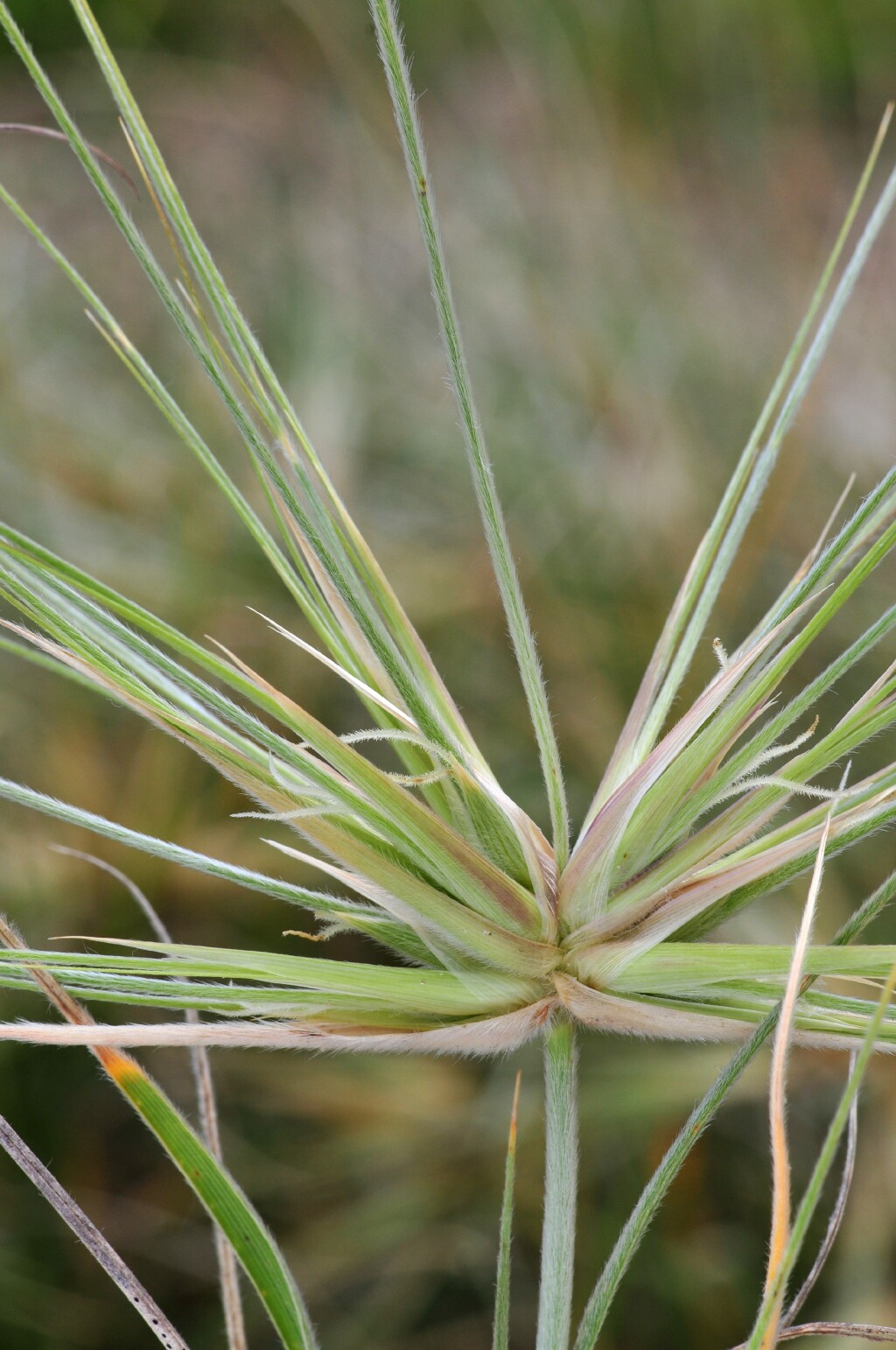Spinifex sericeus
R.Br. SpinifexLong-creeping perennial. Culms decumbent to erect, to 60 cm high; nodes glabrous. Leaves densely silky-pubescent; blade silvery, flat to loosely inrolled, 10–35 cm long, 4–10 mm wide; ligule 4–9 mm long. Male inflorescence c. 10–20 cm long, usually with 1-several narrow clusters of spikes or racemes below a terminal, umbel-like cluster, each raceme or spike subtended by a prominent papery bract. Spikelets 8–14 mm long, glumes subequal, 7–11-nerved, hairy; lower floret staminate or neuter, as long as the spikelet, its lemma 5-nerved, papery, glabrous or ciliate along margin, its palea subequal to lemma; upper floret staminate, more or less equal to lower; female inflorescence almost spherical, to 25 cm diam. (breaking free intact at maturity and rolling, windblown across the sand). Spikelets sessile, each subtended by a papery bract and a stiff, stout, silky-pubescent bristle to 15 cm long; individual spikelets resembling those of male inflorescence but often longer, to 25 mm, with the lower floret neuter. Flowers Sep.–Feb.
GleP, Brid, VVP, GipP, OtP, WaP, EGL, WPro, OtR, Strz. Also Qld, NSW, LHI, Vic, Tas. Naturalised in WA, and NI. Sandy coasts throughout the State.
Spinifex sericeus was formerly included within S. hirsutus Labill., but recent treatments maintain the two species as distinct, with S. hirsutus being confined to Western Australia and South Australia as far east as the Eyre Peninsula. The two species are distinguished principally on vegetative features, with S. hirsutus described as having a stouter stem (9–18 mm internode diam., cf. 4–8 mm diam. for S. sericeus) and generally broader leaves (9–17 mm wide).
Walsh, N.G. (1994). Poaceae. In: Walsh, N.G.; Entwisle, T.J., Flora of Victoria Vol. 2, Ferns and Allied Plants, Conifers and Monocotyledons, pp. 356–627. Inkata Press, Melbourne.
 Spinning
Spinning


